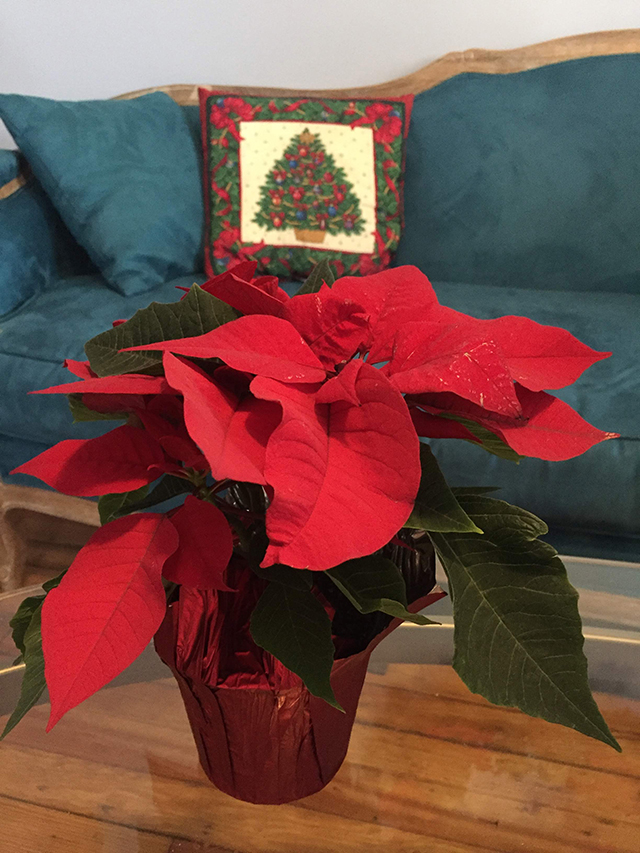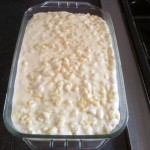The Poinsettia
How many poinsettias do you have in your living room right now? It’s custom to gift these lovely plants to friends and family during the holidays. You can find poinsettias just about anywhere this time of year – the supermarket, CVS, the hardware store, etc. Most of us throw them out when they start to lose leaves and look leggy. With some effort, you can learn how to care for this plant properly and enjoy it year round! I’ll share some tips and care instructions with you, but first, some history relating to this iconic Christmas symbol.
It’s interesting to me that this plant is a tropical native to South America, yet it’s know as a winter ornamental here in the states. The poinsettia (Euphorbia pulcherrima) grows wild on the pacific slope in Mexico and can reach a height of 16 feet! The lavish colored parts of poinsettias that most of us think of as the flowers are actually leaves. There are over 100 cultivated species today.
Why is this plant associated with Christmas? The story begins during the 15th century in Mexico where legend tells of a girl named Pepita or Maria who was too poor to give a gift for the celebration of Jesus’s birthday. An angel inspired the little girl to gather weeds roadside for a bouquet to present to the altar. The weeds blossomed and the plant was beautiful and red. In the 17th century a franciscan friar included the native species in a Christmas mass and from then on, they’ve been connected to Christmas. It is also said that the star shaped leaves symbolize the star of Bethlehem and the red color signifies the blood of Christ.
Thank you Susan and Eric Gottlieb for gifting me this beautiful Poinsettia.
Joel Roberts Poinsetta was an American physician, diplomat and amateur botanist. While in South America he became enamored with Flor de Nochebuena, the Christmas Eve flower. He brought the species back to the U.S. and by 1836 the plant was widely known as the “poinsettia” named after the diplomat.
Caring for a poinsettia is difficult but it’s a rewarding task. My father has successfully cared for his year after year. I haven’t’ had such luck but I will try again this year! Note that the leaves are toxic to cats and small dogs so keep them out of your pets reach.
The plant likes a sunny location, east facing. 66-75 degrees is ideal and avoid sudden temperature changes and even contact with cold window glass. Let the soil dry out in between watering, this is important to its survival. Mist often. It’s very tricky to get a to poinsettia to “bloom”. Here’s the best step by step I found from HGTV.com.
Let the plant dry out gradually starting in April. Water just enough to keep the stem from shriveling, and put the plant in a spot that stays about 60 degrees.
In mid-May, prune the stems to 4” high and repot in a slightly larger container (use potting soil with good drainage.). Move the poinsettia to a warm location with good light, resume watering. When new growth emerges, use a complete fertilizer every two weeks.
In July, pinch back the stems. Pinch again in mid-August. Poinsettias need 10 weeks of 12 hours or less of sunlight each day to show color. For Christmas flowers, keep the plant in complete darkness from 5pm to 8am daily, starting around Oct. 1.
Next week I’ll discuss the other plant commonly given around the holidays, the Christmas Cactus!

























